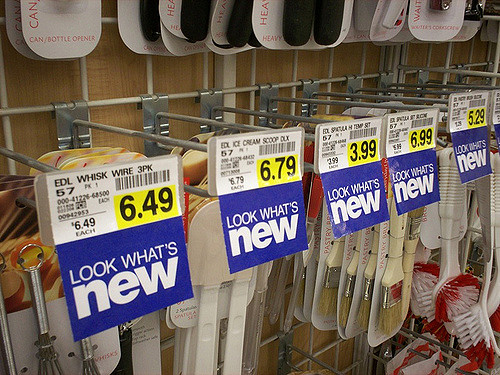
paulswansen
Food giant Mondelez plans to raise prices in North America to offset the increased costs of ingredients and transportation. Airlines now pay for fuel about 40% more than a year ago, and the cost of freight in September increased by 7% in annual terms. Fortunately for Mondelez, consumers and retailers are now willing to pay more, says Dirk Van de Put, the company's general director. According to the Conference Board, the consumer confidence index in the United States in October rose to a maximum since 2000.
American manufacturers are also paying about 8% more for aluminum and 38% more for steel than a year ago, since in the spring the administration of US President Donald Trump imposed import duties on these metals. In addition, in September Washington imposed a $ 200 billion import of goods from China at 10% duty, which affects the business of some companies.
Major US airlines have also raised the cost of air tickets to offset the rise in fuel prices, and argue that this has not weakened demand. “The economy is in a healthy state,” says Ed Bastian, general director of Delta Air Lines. “We expect to be able to shift the increase in the cost of fuel [to consumers] if oil continues to rise in price.”
However, their smaller competitors specializing in low-cost air travel cannot risk scaring off customers. For example, Allegiant Travel refuses the least requested flights in order to reduce costs. It was difficult to raise prices this year for food companies, too. Supermarket chains and online food delivery services were against it, as they fought for market share. Therefore, Kellogg and Hershey used a different tactic - they released new, more expensive versions of some of their products. But, as Hershey general director Michele Buck notes, retailers are now more prepared to raise prices amid rising consumer spending: “Retailers understand that when costs increase, it’s time to give in.”
Paint maker Sherwin-Williams raised prices for its products in October by up to 6% due to an increase in the cost of pigments. The company and its competitor PPG Industries intend to raise prices next year. Some restaurant operators also do this. According to McDonald’s, the organic growth of its sales by 2.4% in the United States in the third quarter can be explained by higher prices for burgers.
Now is a difficult moment for the US economy. Although unemployment is at its lowest level in recent decades, economic growth is strong (GDP grew by 3.5% in annual terms in the third quarter), and inflation is already close to the target value of the Fed at 2%, labor shortages and trade conflicts can lead to further price increases. However, other factors, such as strengthening of the dollar, which makes imports cheaper, can reduce this pressure on prices.
And although some companies can afford to raise prices, at some point an increase in prices may hinder the growth of the US economy. Investors are concerned that accelerating inflation will force the Fed to raise interest rates faster to prevent overheating of the economy.
source: wsj.com
American manufacturers are also paying about 8% more for aluminum and 38% more for steel than a year ago, since in the spring the administration of US President Donald Trump imposed import duties on these metals. In addition, in September Washington imposed a $ 200 billion import of goods from China at 10% duty, which affects the business of some companies.
Major US airlines have also raised the cost of air tickets to offset the rise in fuel prices, and argue that this has not weakened demand. “The economy is in a healthy state,” says Ed Bastian, general director of Delta Air Lines. “We expect to be able to shift the increase in the cost of fuel [to consumers] if oil continues to rise in price.”
However, their smaller competitors specializing in low-cost air travel cannot risk scaring off customers. For example, Allegiant Travel refuses the least requested flights in order to reduce costs. It was difficult to raise prices this year for food companies, too. Supermarket chains and online food delivery services were against it, as they fought for market share. Therefore, Kellogg and Hershey used a different tactic - they released new, more expensive versions of some of their products. But, as Hershey general director Michele Buck notes, retailers are now more prepared to raise prices amid rising consumer spending: “Retailers understand that when costs increase, it’s time to give in.”
Paint maker Sherwin-Williams raised prices for its products in October by up to 6% due to an increase in the cost of pigments. The company and its competitor PPG Industries intend to raise prices next year. Some restaurant operators also do this. According to McDonald’s, the organic growth of its sales by 2.4% in the United States in the third quarter can be explained by higher prices for burgers.
Now is a difficult moment for the US economy. Although unemployment is at its lowest level in recent decades, economic growth is strong (GDP grew by 3.5% in annual terms in the third quarter), and inflation is already close to the target value of the Fed at 2%, labor shortages and trade conflicts can lead to further price increases. However, other factors, such as strengthening of the dollar, which makes imports cheaper, can reduce this pressure on prices.
And although some companies can afford to raise prices, at some point an increase in prices may hinder the growth of the US economy. Investors are concerned that accelerating inflation will force the Fed to raise interest rates faster to prevent overheating of the economy.
source: wsj.com


















